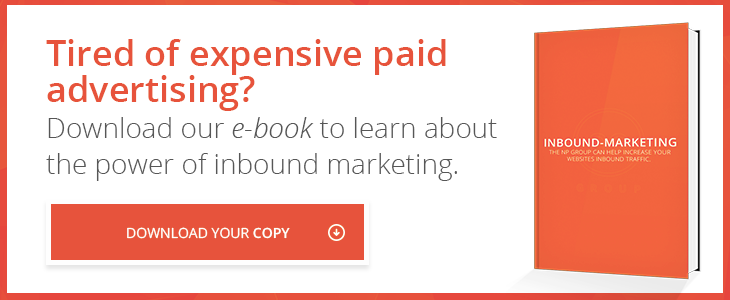Drawing up a new marketing plan without reviewing your current marketing performance is like trying to get directions from Google Maps without knowing your starting point.
Knowing exactly what your inbound marketing strategy is doing for you today is absolutely imperative in deciding where you want your marketing to take you in the next year. An excellent way to gauge your marketing success is by assessing key performance indicators (KPI's).
Let's say your CEO asks you to put together a report card on your brand’s 2015 marketing performance. In order to fulfill this request, you would need to know exactly what to report on and how to grade it.
This is where key performance indicators come in. But which KPI metrics should you use to examine performance?
Unique Visitors
For many online businesses, specifically among B2B businesses, the company website is the single most important piece of marketing property.
Having an understanding of how much traffic is coming into the website, as well as how well that traffic is being converted into leads is essential to understanding the overall site performance.
Luckily, knowing your sites unique visitors is probably the easiest metric to measure. Google Analytics, HubSpot, and plenty of other analytics softwares provide this information readily.
Marketing Qualified Leads (MQL)
In short, marketing qualified leads (MQLs) are leads who meet all requirements of being a potential customer in whichever way the company decides to evaluate and score leads.
But what's the difference between MQLs and regular leads? The difference is that an MQL has converted on a "brand filter" offer and has moved a step further into the sales funnel.
This could include certain demographic traits, company size and annual revenue (for B2B leads), or number of engagements with your site and content. An MQL can be someone who has downloaded a free ebook, has subscribed to all social media outlets, or has completed some type of action that shows the individual is interested in what you have to offer.
Sales Qualified Leads (SQL)
A sales qualified leads (SQL) is a marketing qualified lead who has demonstrated an intent to purchase. The SQL leads are qualified and ready to buy from your company. SQLs are the people your sales team want to talk to!
SQLs fit into the customer profile of being the most attractive potential customers. The purchasing behavior of an SQL is a signal to your sales force that they probably won't be wasting their time. This is the point where a lot of potential customers drop off, as many companies have huge gaps between their marketing and sales teams. Make sure that loop is closed so you know your efforts aren’t wasted.
What turns a MQL into an SQL is completely up to your team and internal process, but the total number of MQLs and SQLs should be measured each month by channel.
Customer Retention
It costs more to scout out and acquire new customers than it does to keep customers happy—as it should be. Having a high customer retention rate tells you customers are getting more value from your product or service than they are from your competitors.
There are many different ways to track this KPI, but it largely depends on how well your team communicates internally and the lifecycle of your customers. If you have products that you sell, this could account for how many customers come back to purchase more. If you run on a subscription model or offer on-going services, you can examine the turnover rate compared to the number of existing customers.
Lead Closing Rate
Most business professionals will agree with the notion that new customers are the lifeblood to any business, no matter the industry. With this said, the ability of a sales force to effectively close leads is crucial to marketing success.
But monitoring the effectiveness of your closing rate is no small task, since closing rates can be easily influenced by a number of things: Quality of leads, quality of products or services, brand reputation, or pricing competitiveness, etc.
A high closing rate lets you know your value proposition is attractive and your sales team is fully capable of closing important deals. A weak closing rate means your sales team is talking to the wrong leads. Check your lead scoring profile and then measure closing rate for your MQLs next to your SQLs, looking for any inconsistencies or flaws.
This is just a small sample of key performance indicators and what they can do for your business. Pinpoint the metrics that fit your business model and monitor them month by month. And remember: Creating a phenomenal inbound marketing plan begins with understanding where your business is today, and where it should be tomorrow.



